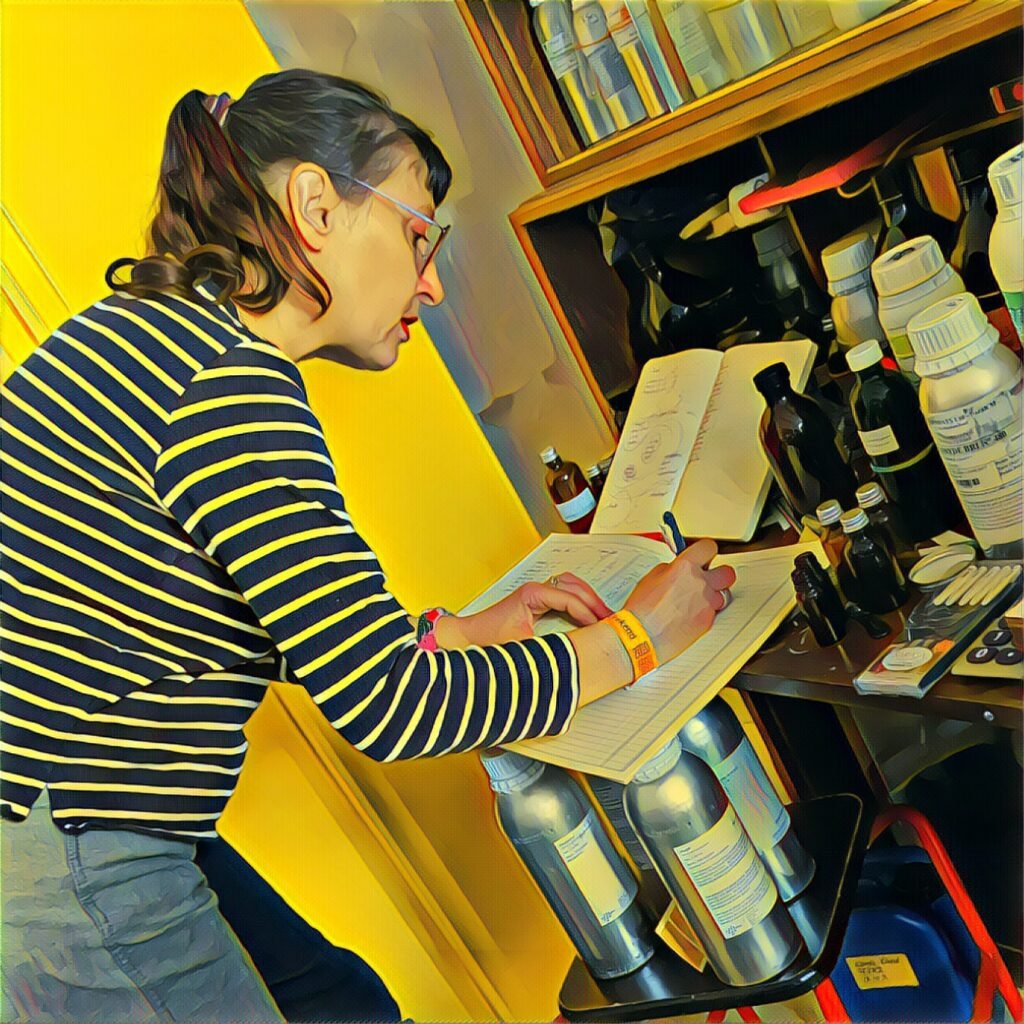The Five Rules

The Five Rules
1 Write everything down.
You won’t remember it all. Tiny variations can make a big difference. Writing everything down not only helps you recreate fragrances you’ve made before, but it also improves your perfume-making skills. Every time you test new materials and experiment with different combinations, you add to your understanding of perfumery.
Without a record, you’ll find yourself repeating the same tests over and over because there’s no way to keep it all in your head.
2 Always put the lid back on.
It’s always a good idea to put the lid back on, and even more so in perfumery. Some of the materials we use are skin sensitisers, so spilling them, particularly when using them at 100% strength, is something we need to be careful of.
It’s not just the skin sensitisers we should put the lids back on, though. It’s everything. Why risk wasting valuable materials or having your whole work area smell of one material while trying to test others?
3 Get to know your materials.
A fragrance material has an aroma, but it can also give texture, longevity and diffusion. When you assess your materials observe how it feels: it is soft, sharp, punchy, gentle?
Understand “low slope” materials – your Clouds – and their purpose.
Materials might not smell strong, so you could imagine that they don’t have an effect, but while they have a small effect on the aroma, they might give your accord clarity or staying power.
4 Take the shortest route.
If you think your fragrance is great with just four materials, then stop working on it.
The reason that many long commercial formulas contain tens and perhaps hundreds of materials is that they are made up of several accords. Perhaps the rose is made from 32, and the jasmine is made from 17, the bergamot is created from 4 and the cedarwood from 12.
Do not be discouraged or intimidated by other perfume makers who are creating their own osmanthus accord from 37 aromachemicals. It might not be any good, and perhaps they could have made it from four. Or – if they have the budget – they could use osmanthus.
The extra materials might be there to make a fragrance more beautiful, but it could just be to create an accord to reduce the cost.
Add more materials only if you feel they will help you to get you where you're going, never because someone else says you should. As always, give them a try. Experiment. If they help, great. If you find that you preferred your original blend without additions, put that one aside, go back and use your short formula.
I would advise against adding more to “fix” something. One of the questions I get asked most frequently is how to fix a blend that's gone wrong, and I usually recommend noting the point at which you stopped liking it, start again and remake that version, putting the “wrong” one aside to revisit a month later.
5 Only you can decide when it’s ready.
Assess your materials in terms of how similar they feel to each other; they might smell completely different from each other, but do they have the same lightness, or strength, texture or intensity?
Materials with a similar feel balance well, even if they don’t belong to the same fragrance family. When you blend your materials you’re searching for a good relationship between them.
Balance is not the same as equality. To create a well balanced accord, you will probably need different amounts.
You can dilute your materials in perfumers’ alcohol in proportion to their intensity; that way they are easier to balance in similar proportions, so you won’t run out of a soft material when balancing it with one a more potent one.
Practising balancing aromas is one of the most useful assignments. If you can practise every day, you’ll become a better perfumer more quickly.
Expect unpredictable effects.
It’s up to you to decide when to stop and bottle your fragrance. Have you explored all the alleyways you could go down? Are you happy with the first version you made? Then stop.
Share your work with your friends and family, or if you have a budget for research, have it evaluated by a perfumery professional, but still the person to make a decision about whether or not it’s finished, that’s you.
The exception is when you’re creating perfume for clients; in that case, it’s them.
